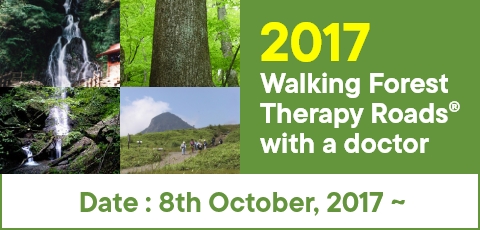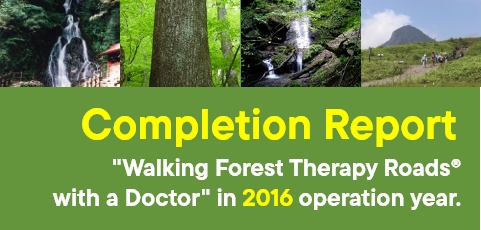RESOURCES
Last Updated: December 28, 2010
INFOM: History and Future Goals
Background
In recent years, despite the forest absorption of carbon being widely recognized in terms of atmospheric carbon fixation, the future of many forests remains uncertain. The advancement of urbanization and the focus on modernization in today's society have often cast forest environments as an obstacle in the path of land development. In addition, as the specialization of industry, spurred by the growth of international economic activity has progressed and forests have gained commercial value for lumber production, a clear division between countries importing and exporting lumber and those who care for the environment has emerged.
More recently, there have been periodic calls for the expansion of forests in order to prevent global warming and halt the man-made spread of CO2 into the atmosphere, and also for society to produce and release minimal amounts of carbon. The current wave of international efforts to shift from oil to renewable sources of energy has seen large scale attempts to spread these initiatives centralized largely in the Middle East, with the establishment there of facilities that employ cutting-edge technologies, such as solar and wind power generation. Today, all the world's forests combined are capable of removing no more than 20% of the greenhouse gases released by man (IPCC), and with a possible rise in large-scale deforestation to make space for newly established solar and wind power generation facilities, there are mounting concerns that the world's forests will shrink even further.
The Benefits of Forests
However, as you are probably well aware, the power of forests to maintain and preserve our world's environments is not limited to carbon absorption and fixation. Leaves also capture and retain heat when they come into contact with light from the sun through the process of transpiration, and rather than causing a cooling effect in the surrounding atmosphere, sunlight that filters through the trees to the forest floor has the effect of preserving warm air temperatures within the forest at night and in colder regions. In addition, rainfall and winds can have a calming and regulating effect on the general climate.
Other environmental preservation abilities of the forests are known to include the absorption and adsorption of microscopic aerosol particles (NOx, SOx) that come in to contact with leaves, the purification of pollutants in the air, and the ability to capture water through leaves. Furthermore, the pH balance of the water held within trees allows electrolytes to be taken from the soil and to be purified by the effects of denitrification, which in turn produces high quality freshwater that is essential for all plant and animal life, including human beings, and provides plants and animals with habitats and nourishment.
Forests also offer numerous benefits to human society, including the prevention of sediment disasters by stopping the flooding of rivers and streams, and the provision of lumber as building material for homes, furniture and other items right down to the buttons for our clothing. Forests really seem to be biological resources that may be used for any purpose.
Advanced countries now often use some of these same resources as natural ingredients in foods and commercial products, while native peoples may use them as medicines and, of course, everyone can appreciate the simple beauty of the forest. There are countless possibilities and endless abilities contained within our forests.
Forests in Japan
In the early and mid 1970s, while being aware of some the environmental effects described above, Japan suffered from commercial pressure to export low cost timber. Even so, a long cultural history of treasuring forests saw some Japanese people stalwartly try everything they could to protect the forests that had been cared for by their ancestors and that were said to be the dwellings of the gods.
While having a large population, Japan is a relatively small country, comprising only 0.28% of the world’s land mass with a national territory of approximately 378,000 square kilometers. However, it is also a long, thin country, stretching from the tropics to the frigid zone: from a latitude of 45 degrees, 31 minutes, 35 seconds north, 141 degrees, 55 minutes, 09 seconds east to a longitude of 20 degrees, 25 minutes, 31 seconds north, 136 degrees 04 minutes 11 seconds east.
Topographically, it houses a rich natural environment with a vast diversity of flora and fauna. This is especially true of its forests, which comprise 66.4% of the country (Forest Area Ref: The Forestry Agency Data), and consist of both tropical and Arctic forests that harbor all species of evergreen broadleaf trees, deciduous broadleaf trees and conifers.
Today in Japan, while issues such as the environment, an aging society and the revitalization of regional economies are pressing, it appears that a partial solution to these three problems, through commercializing the beneficial effects forests can have on people, may finally have arrived.
Due to the importing of low-cost foreign lumber and a sharp decrease in the demand for domestic lumber, and together with the view that the national forests were seen to be falling apart, in 1982, the then Secretary of the Forest Agency, Tomohide Akiyama, coined the term 'forest bathing trip'
Based on a 1930 research paper ' Plant Bacteriocidein (Phytoncide)' by the Soviet scientist Tokin, Akiyama hypothesized that 'bathing' in a Phytoncide-rich environment would promote better health, and so he encouraged local people to maintain the forests and to endeavor to make a livelihood without needing to cut down trees for lumber.
However, at this time, there was no real explanation for the beneficial health effects on human beings, and certainly no hard proof or evidence to back up the claims being made, so the Health and Welfare Ministry( now the Ministry of Health, Labor, and Welfare) assumed the claims were scientifically groundless. However the rumor spread that 'going to the forest may be good for your health'.
According to public opinion polls on Forest Activities conducted by the Cabinet Office, the number of people saying that they would like to visit a forest for its beneficial effects was measured at 12.2% in 1992, 15.5% in 1999, and 26.4% in 2003.
Yet, regardless of this gradual increase in the awareness of forest activities and the stated desire for forest trips, actual trips to forests for rest and relaxation were an insignificant part of local economic activity. Worse still, more and more forests were being replaced with housing developments. In the latter half of the 1990s, the fresh water-holding capacity of forests was highlighted but with the forests simply being referred to as 'tree dams'. Over the last 20 years, there have been sporadic attempts by multiple organizations to maintain Japanese forests but most of those have not been long lasting.




